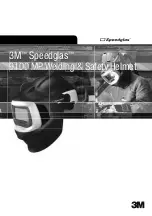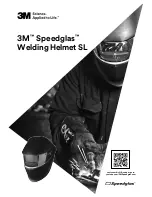
Operating instructions
NAV310
Product description
8016535/1D2F/2022-11-14
© SICK AG · Germany · All rights reserved · Subject to change without notice
21
Chapter
3
3.5.2
Scanning range of the NAV310
The scanning range of the NAV310 is dependent on the remission of the objects to be de--
tected. The better a surface reflects the incident radiation, the greater the scanning range
of the NAV310.
3.5.3
Beam diameter and distance between measured points
With increasing distance from the NAV310 the laser beam increases in size. As a result the
beam diameter on the surface of the object increases.
The distance-dependent beam diameter is the distance (mm (in)) × 0.005 rad + 20 mm
(0.79 in).
With increasing distance from the NAV310 the spacing between the individual measured
points also increases. The diagram in
shows the beam diameter and the distance be--
tween measured points as a function of the distance from the NAV310.
Fig. 7:
Beam diameter and distance between measured points at 0 to 100 m
To reliably detect an object, a laser beam must be fully incident on it once. If the beam is
partially incident, less energy will be reflected by an object than necessary in some circum--
stances (see
How to calculate the minimum object size:
Beam di distance between measured points = minimum object size
For beam diameter and distance between measured points as a function of the dis-
tance from the NAV310 see the diagram in
.
Important
In particular on the usage of the NAV310 for the output of measured values, it is necessary
for a reliable measurement that the beam is incident on the object several times.
Material
Remission
Range
Black photographic cardboard,
matt
10 %
0.5 … 35 m (1.64 … 114.8 ft)
White cardboard
90 %
0.5 … 120 m (1.64 … 131.2 ft)
Reflective tape
>3000 %
0.5 … approx. 250 m (820.21 ft)
Tab. 6:
Typical remissions and scanning ranges
0
Distance in m
Siz
e
in
mm
20
40
80
100
0
200
Beam diameter
Distance between measured points
400
60
800
600
















































